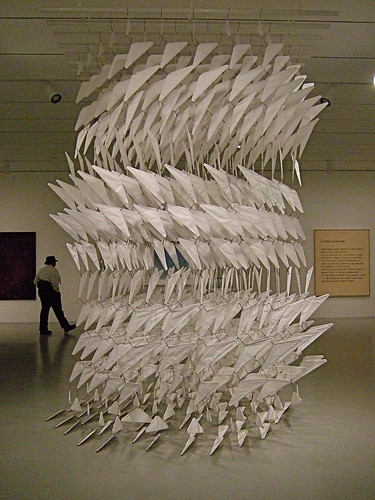
William Shakespeare’s Measure for Measure is one of the author's stranger plays. Although the play is full of comedic characters and funny lines, many aspects of the plot are deeply disturbing. The play is currently being performed on the Lansburgh stage of the Shakespeare Theatre Company in Washington, DC.
The Duke of Vienna plans to leave his city because he feels that he has become powerless to correct wrongdoing since he has not enforced the laws in such a long time. He goes on to tell us that he has put Angelo, a strict and religious man, in charge of the city. Angelo is a man who believes that justice is a fixed, unbendable concept. The Duke believes his replacement will be able to frighten the people into following the law without damaging his own reputation.
After the Duke has left town, Angelo begins to enforce the ancient laws of the city, including a law that prohibits begetting a child out of wedlock. According to the citizens of Vienna, this law has been nearly obsolete for some time. Claudio, the “son of a noble gentleman,” is immediately arrested, to the dismay of Claudio’s engaged fiancé, friends, and the other judges before whom cases are tried. They appeal to Angelo’s own experience of passion and desire to try to convince him of the universality of Claudio’s crime. Angelo says that he has never felt such feelings.
Later in the play, Angelo succumbs to his own lust and almost rapes Claudio’s sister, a novice nun named Isabella. He insists to her that the only way she can save Claudio is to yield her body to him. The Duke, wearing a disguise in order to watch Angelo, overhears a conversation in the prison between Isabella and Claudio and offers to help them. The Duke then brings the play to a conclusion by subterfuge, taking the reins of power from Angelo and revealing his true identity.

STC’s production is set, like the original play, in Vienna. However, the Vienna that Shakespeare thought he was writing about may not be the same one we think about today. According to some scholars, people in Elizabethan England may have imagined Vienna to be a city in Italy. Given the profusion of Italian names in Measure for Measure (Angelo, Claudio, Isabella, and Lucio) it seems likely that Shakespeare really did believe he was writing about Italy. The Shakespeare Theatre production sets the play firmly in Austria. In fact, in an inventive and appropriate decision, director Jonathan Munby chooses to use Fascist-era Austria as a backdrop to this play about authority.
At the beginning of the show, the set (designed by Alexander Dodge) establishes a bar or lounge. The center of the stage is filled with a raggedy curtain and a wooden platform stage. Tables line the exterior where a man built like a bouncer serves drinks. The “bawd’s house” of the original Shakespeare is replaced with a racy cabaret of pre-war Austria.

In the Shakespeare Theatre Company’s production of the play, the Duke’s opening scene shows him at the cabaret, drinking heavily, and flirting heavily with a young man--until the Duke erupts in sudden rage. Here, the Duke's concern about his ability to enforce the laws of the land seems directly related to his "deviant" desires. Sexuality (including homosexuality) is a significant theme throughout the play.
While the STC’s production features red banners and military crests referencing the fascist leaders of the era surrounding World War II, there is an interesting comparison in the production with an event in recent Austrian politics. Jorg (sometimes spelled Joerg) Haider was an Austrian politician and long-time leader of the “Freedom Party” in Austria, raised by parents active in the Nazi Party and continuing to espouse fascist beliefs throughout his political career. Haider died in 2008, driving away from a gay bar, extremely drunk and supposedly in a rage.
Occasionally, STC’s Measure for Measure seemed disjointed or awkward. For instance, at the very end of the play a mysterious figure is seen standing on the back balcony of the stage. After the curtain came down, the audience began to wonder who the figure was and what he was meant to represent. No conclusions were made, and few plausible ideas were even suggested. The actors did not always form a strong ensemble. The Duke, played by Kurt Rhoads, had many beautiful lines, most of which he delivered excellently. But some of his lines felt dragged down by the complexity of the plot. Even during comedic scenes, actors seemed bogged down in the weightiness of the play.
While I did not find this production of Measure for Measure fully compelling, it had an inventive conceit. In addition, the play itself is full of many beautiful lines.









